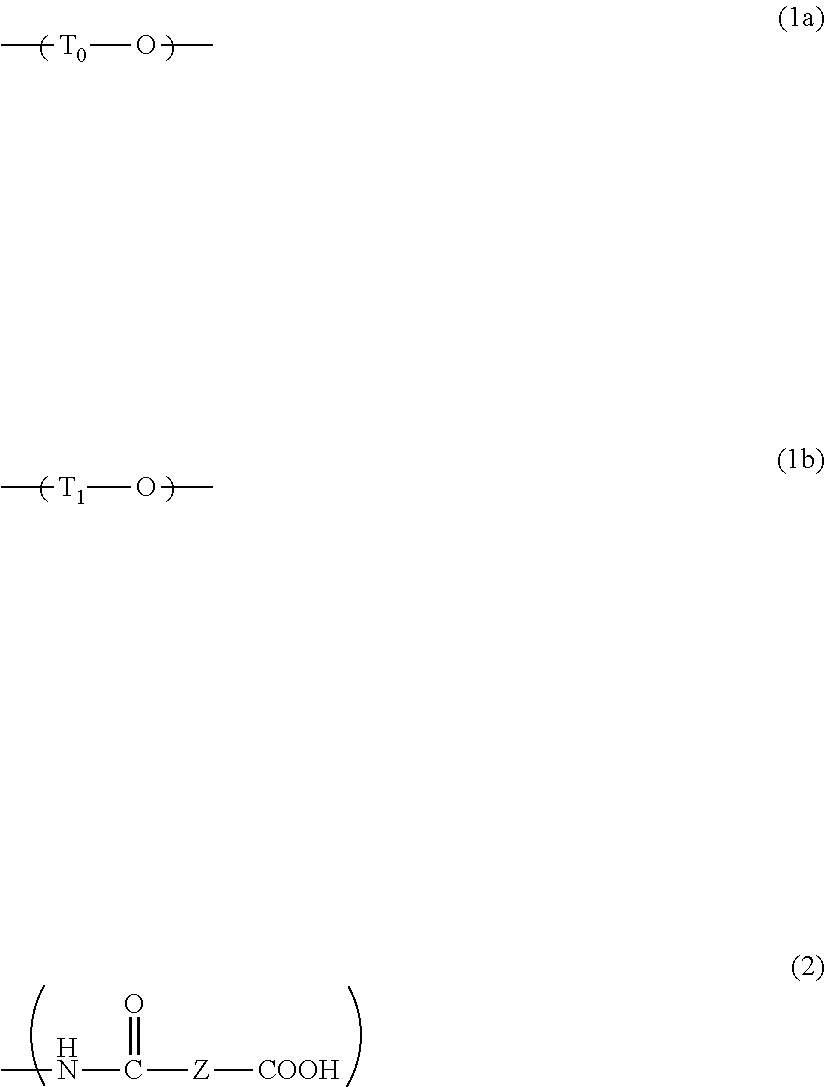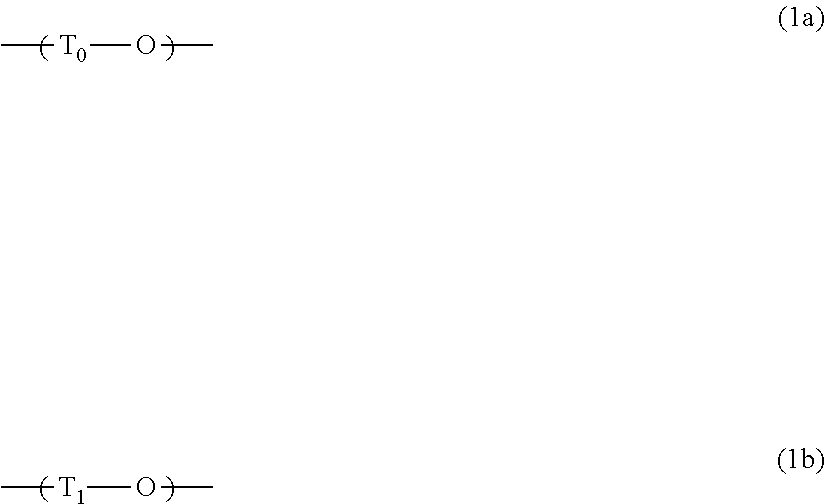Resin composition, method for forming pattern using the same, and method for synthesizing polymer
a technology of resin composition and composition, which is applied in the field of resin composition, can solve the problems of reducing the flexibility of the main chain skeleton, difficult to complete imidation, and difficult to use the resin composition at a low temperature, i.e., about 250° c., and achieves the effect of impairing the characteristics of the resulting polymer and high insulating properties
- Summary
- Abstract
- Description
- Claims
- Application Information
AI Technical Summary
Benefits of technology
Problems solved by technology
Method used
Image
Examples
synthesis example 1
[0074]In a three-necked flask equipped with a stirrer, a thermometer, and a Dimroth condenser, 61.02 g of bis(4-fluorophenyl)sulfone and 109.90 g of 2,2-bis(3-amino-4-hydroxyphenyl)hexafluoropropane were dissolved in 678.45 g of 1-methyl-2-pyrrolidinone, and then 83.18 g of potassium carbonate was added thereto. The system was then purged with nitrogen. The mixture was subsequently heated to 140° C. and reacted for 20 hours. After the completion of the reaction, the reaction solution was suction filtered through a Hirsch funnel. To the resulting filtrate, a solution of (2N-hydrochloric acid):(1-methyl-2-pyrrolidinone)=1:9 (volume ratio) was added until the filtrate became acidic, and then a pH test paper was used to confirm that the solution was acidic. The resulting solution was subsequently added dropwise to a mixed solution of water:methanol=3:7 (volume ratio) and reprecipitated. After the dropwise addition, the resulting product was suction filtered through a Buchner funnel, and...
synthesis example 2
[0075]In a three-necked flask equipped with a stirrer, a thermometer, and a Dimroth condenser, 52.36 g of 4,4′-difluorobenzophenone and 109.88 g of 2,2-bis(3-amino-4-hydroxyphenyl)hexafluoropropane were dissolved in 655.97 g of 1-methyl-2-pyrrolidinone, and then 83.04 g of potassium carbonate was added thereto. The system was then purged with nitrogen. The mixture was heated to 140° C. and reacted for 20 hours. After the completion of the reaction, the reaction solution was suction filtered through a Hirsch funnel. To the resulting filtrate, a solution of (2N-hydrochloric acid):(1-methyl-2-pyrrolidinone)=1:9 (volume ratio) was added until the filtrate became acidic, and then a pH test paper was used to confirm that the solution was acidic. The resulting solution was subsequently added dropwise to a mixed solution of water:methanol=3:7 (volume ratio) and reprecipitated. After the dropwise addition, the resulting product was suction filtered through a Buchner funnel, and washed with t...
example 1
[0082]In a three-necked flask equipped with a stirrer, a thermometer, and a Dimroth condenser, 2.50 g of the aromatic polyether obtained in Synthesis Example 1 and 0.84 g of succinic anhydride were dissolved in 13.36 g of propylene glycol monomethyl ether acetate. The system was then purged with nitrogen. The mixture was subsequently heated to 80° C. and reacted for 1 hour. The reaction solution was cooled to room temperature, and then filtered through a polytetrafluoroethylene (hereinafter abbreviated to PTFE) microfilter having a pore size of 1.0 μm to prepare a resin composition containing 20% by mass of an aromatic polyether having a side chain structure of the following formula (21). The amino group conversion of the resulting aromatic polyether was 96%.
PUM
| Property | Measurement | Unit |
|---|---|---|
| Molecular weight | aaaaa | aaaaa |
| aaaaa | aaaaa |
Abstract
Description
Claims
Application Information
 Login to View More
Login to View More - R&D
- Intellectual Property
- Life Sciences
- Materials
- Tech Scout
- Unparalleled Data Quality
- Higher Quality Content
- 60% Fewer Hallucinations
Browse by: Latest US Patents, China's latest patents, Technical Efficacy Thesaurus, Application Domain, Technology Topic, Popular Technical Reports.
© 2025 PatSnap. All rights reserved.Legal|Privacy policy|Modern Slavery Act Transparency Statement|Sitemap|About US| Contact US: help@patsnap.com



